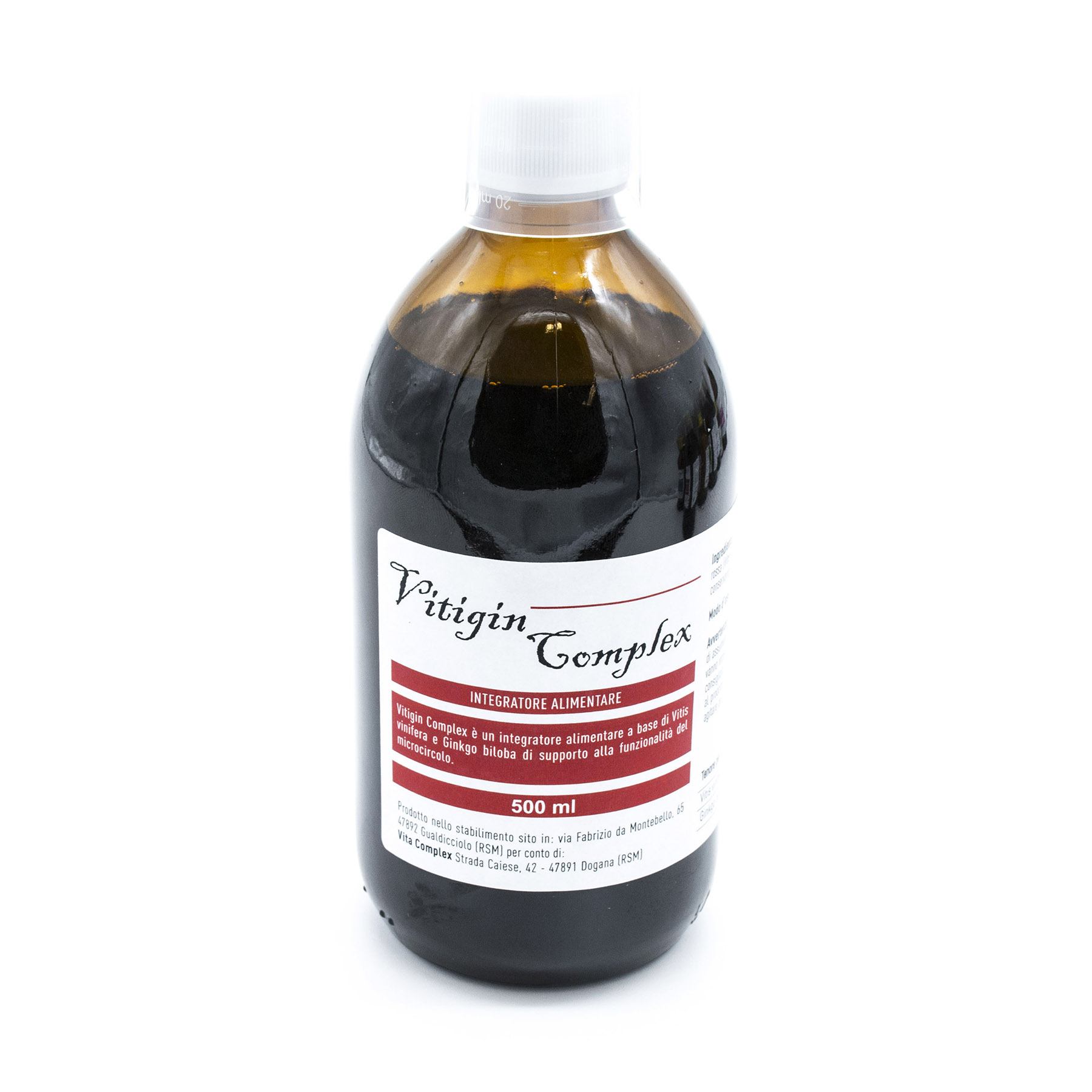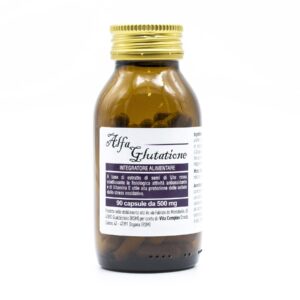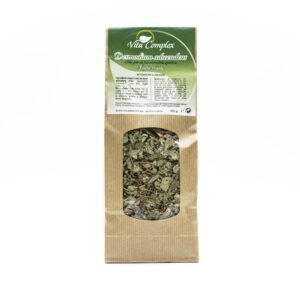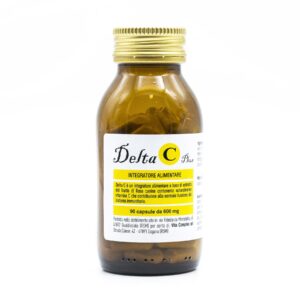PACK:
500 ml syrup in tinted glass bottle
PRECAUTIONS FOR USE:
Consult your doctor if you are taking anticoagulant or anti-platelet medications. Not recommended during pregnancy and lactation.
MAIN INGREDIENTS:
GINKGO BILOBA
VITIS VINIFERA
INGREDIENTS:
water, hydroglyceric extracts (water, stabilizer: glycerol, part of plant in ratio 1:2) of: Red vine (Vitis vinifera L, leaves), Ginkgo biloba (Ginkgo biloba L., leaves); elderberry juice, acidifier: citric acid, preservative: potassium sorbate.
Last updated on 04/06/2024
HOW ITS COMPONENTS WORK:
A supplement consisting of fluid extracts of Ginkgo Biloba (leaves) and Vitis vinifera (leaves), plants known for their action on the microcirculation.
Ginkgo Biloba is the oldest known family of trees, it existed forty million years before the appearance of dinosaurs.
It is the only tree that endured and survived the explosion of the atomic bomb in Hiroshima on August 6, 1945.
It is rich in terpenes, polyphenols and flavonoids. Its vasodilator (particularly cerebral), antiaggregant and antioxidant properties are no longer disputed. The action of ginkgo seems to be the result of a synergy between different active ingredients including flavonoids, flavones, organic acids, in particular the specific lactones of ginkgo – ginkgolides – isolated by Elias James Corey (Nobel prize winner), and bilobalide. Ginkgo has proved particularly effective in circulation problems, its active ingredients make it possible to dilate the arteries, veins and capillaries. They also stimulate microcirculation and decrease blood viscosity, thus preventing the formation of lumps. It is particularly recommended for treating memory disorders and cognitive impairment related to ageing.
Discovered thousands of years ago, it has numerous medical properties:
– capillary circulation
– vasodilator
– venous circulation
– anti-aggregant
– powerful antioxidant
Vitis vinifera or red vine is similarly known for its action on blood circulation and is an antioxidant.
It contains a phenol – resveratrol – but above all tannins, in particular anthocyanosides. These are natural pigments contained mainly in the leaves, located in the cell vacuoles. They are soluble in water and have a significant antioxidant activity. This is a diuretic, antioxidant, detoxifying, fluidifying, tonic and anti-inflammatory plant and is also recommended for treating problems relating to capillary fragility, varicose veins and haemorrhoids.
Tannins promote the contraction of vascular muscle cells, facilitating the return to the heart of blood accumulated in the lower limbs.
The presence of proanthocyanidols in red vine leaves permit an anti-free radical action and a stabilization of the collagen present in vascular membranes.
In this way, it tones the veins which explains its use in problems such as heavy legs, varicose veins, rosacea and capillary fragility. It also provides relief from haemorrhoids.
RECOMMENDED USES:
one measuring capful (10 ml) per day diluted in water.
SCIENTIFIC BASES – BIBLIOGRAPHY:
• Jocelyne Trémouillaux-Guiller, « Ginkgo biloba : le rescapé et son algue », dans Pour la Science,no 364, février 2008, p. 76–81 [texte intégral [archive]].
• Pierre-François Michel, Ginkgo biloba, l’arbre qui a vaincu le temps. Éditions du Félin, WWF, 1999.
• Cet arbre est encore visible dans le jardin des plantes de Montpellier.
• a et b Wolfgang Michel, « On Engelbert Kaempfer’s “Ginkgo” », 6. Dec 2005, http://www.flc.kyushuu. ac.jp/~michel/serv/ek/amoenitates/ginkgo/ginkgo.html [archive]
• Loudon J.C. : Arboretums et fructisetum britannicum or the trees and shrubs of Britain. Londres : 1838, vol.2, p. 2094-100. D’après H. Gaussen dans Ginkgo biloba, P.-F. Michel, Op. cit., p.66.
• P.-F. Michel, Op. cit., p.66.
• Le ginkgo Biloba, Beaufour, préface de Jean-Marie Pelt, p.87
• Selon Francis Hallé, “Eloge de la plante”, 1999, p.124, il existerait en Chine un Ginkgo de 3 000 ans.
• R. Auger, J. Laporte-Cru, Flore du domaine atlantique du Sud-ouest de la France et des régions des plaines, CNDP, 1982, 516 p. (ISBN 2 86617 225 6), p. 45
• Le Ginkgo et les Cycas ont des spermatozoïdes à cils vibratiles, comme les fougères. Les conifères et les plantes à fleurs n’ont pas de spermatozoïdes à cils vibratiles. De même, le gamétophyte femelle du Ginkgo contient de la chlorophylle et effectue de la photosynthèse, comme celui des fougères, alors que ce n’est pas le cas du gamétophyte femelle des conifères et des plantes à fleurs.http://www.xs4all.nl/~kwanten/franpropagation.htm [archive]
• Cultiver le Ginkgo biloba [archive]
• L’indestructible ginkgo, Documentaire d’Eric Gonzalez (France, 2003)
http://television.telerama.fr/tele/documentaire/
super-plantes,4520288,episode3.php [archive]
• Listing de références sur le ginkgo (http://www.newcrops.uq.edu.au/listing/ginkobiloba.htm)
• Pietri S, Maurelli E. Drieu K, Culcasi M, Cardioprotective and anti-oxidant effects of the terpenoid COMPONENTS of Ginkgo biloba extract (EGb 761) (http://www.ncbi.nlm.nih.gov/pubmed/
9140830?dopt=Abstract), J Mol Cell Cardiol, 1997;29:733-742
• Ginko et maladie d’Alzeimer. Entre placebo et efficacité très modeste. in Prescrire : Bien utiliser les plantes en situations de soins, numéro spécial été 2007, T. 27, n0 286
• DeKosky ST, Williamson JD, Fitzpatrick AL. 2008. Prevention of dementia, a randomized
controlled trial [archive]. Journal of the American Medical Association 300:2253-2262.
• Snitz BE, O’Meara ES, Carlson MC et al. 2009. Ginkgo biloba for preventing cognitive decline in older adults [archive]. Journal of the American Medical Association 302:2663-2670.
• Le ginkgo sur eutraco.com [archive]
• Rowin, J., Lewis, S. L., Spontaneous Bilateral Subdural Hematomas Associated with Chronic Gingkgo bilobaIngestion, Neurology, 1996, 46,1775-1776
• Vale, S., Subarachnoid Haemorrhage Associated with Ginkgo biloba, Lancet, 1998, 352, 36
• Mathews, M. K., Association of Ginkgo biloba with Intracerebral Hemorrhage, Neurology, 1998, 50, 1933- 1934
• Fong, K. C. S., Kinnear, P. E., Retrobular Haemorrhage Associated with Chronic Ginkgo biloba Ingestion,Postgrad. Med. J., 2004, 79, 531-532
• Le Ginkgo Biloba, Beaufour, préface de Jean-Marie Pelt, p.41
• http://www.ladepeche.fr/article/2011/10/22/1198992-
capitole-on-a-abattu-l-arbre-qui-pue.html [archive]
• Bruneton, J., Pharmacognosie – Phytochimie, plantes médicinales, 4e éd., revue et augmentée, Paris, Tec & Doc – Éditions médicales internationales, 2009, 1288 p. (ISBN 978-2-7430-1188-8)
• Kevin M. Davies, « Modifying Anthocyanin Production in Flower », dans in K. Gould et als “ANTHOCYANINS Biosynthesis, Functions and Applications”, Springer, 2009
• P. Sarni-Manchado, V. Cheynier, Les polyphénols en agroalimentaire, Lavoisier, Editions Tec & Doc, 2006, 398 p. (ISBN 2-7430-0805-9)
• Michaël Jourdes, Réactivité, synthèse, couleur et activité biologique d’ellagitannins c-glycosidiques et flavano-ellagitannins, thèse de chimie organique, Université de Bordeaux I, 2003
• Araceli Castaneda-Ovando, Ma. de Lourdes Pacheco-Hernandez, Ma. Elena Paez-Hernandez, Jose A. Rodriguez, Carlos Andres Galan-Vidal, « Chemical studies of anthocyanins: A review », dans Food Chemistry, vol. 113, 2009, p. 859-871
• Clifford M.N., « Anthocyanins – nature, occurrence and dietary burden », dans J. Sci. Food Agric.,vol. 80, 2000
• Reinhard Eder, “Pigments”, in Food Analysis by Hplc, Leo M.L. Nollet (ed.), Marcel Dekker Inc, 2000, 1068 p.
• Timberlake C.F., Henry B.S., « Anthocyanins as natural food colorants », dans Prog. Clin. Biol. Res.,vol. 280, 1988, p. 107-121
• (en) Jack Sullivan, « Anthocyanin », dans Carnivorous Plant Newsletter, vol. 27, no 3, septembre 1998,p. 86-88 [texte intégral [archive] (page consultée le 6 octobre 2009)]
• (en) Jin-Ming Kong, Lian-Sai Chia, Ngoh-Khang Goh, Tet-Fatt Chia et R. Brouillard, « Analysis and biological activities of anthocyanins », dans Phytochemistry, vol. 64, no 5, novembre 2003, p. 923-933(ISSN 0031-9422) [lien PMID [archive], lien DOI [archive]].
• Michaela C. Matuschek,T, Wouter H. Hendriks, Tony K. McGhie, Gordon W. Reynolds, « The jejunum is the main site of absorption for anthocyanins in mice », dans Journal of Nutritional Biochemistry, vol. 17, 2006,p. 31-36
• Séverine Talavéra, Catherine Felgines, Odile Texier, Catherine Besson, Claudine Manach, Jean-Louis Lamaison, and Christian Rémésy, « Anthocyanins Are Efficiently Absorbed from the Small Intestine in Rats », dans The J. of Nutrition, vol. 134, no 9, 2004, p. 2275-2279
• Catherine Felgines, Sé verine Talavéra, Marie-Paule Gonthier, Odile Texier, Augustin Scalbert, Jean-Louis Lamaison and Christian Rémésy, « Strawberry Anthocyanins Are Recovered in Urine as Glucuroand Sulfoconjugates in Humans », dans The J. of Nutrition, vol. 133, no 5, 2003, p. 1296-1301
• Rocío González-Barrio, Gina Borges, William Mullen and Alan Crozier, « Bioavailability of Anthocyanins and Ellagitannins Following Consumption of Raspberries by Healthy Humans and Subjects with an Ileostomy», dans J. Agric. Food Chem., vol. 58, no 7, 2010, p. 3933-3939
• Milbury PE, Vita JA, Blumberg JB., « Anthocyanins are bioavailable in humans following an acute dose of cranberry juice », dans J. Nutr., vol. 140, 2010, p. 1099-104
• Taylor C. Wallace, « Anthocyanins in Cardiovascular Disease », dans Adv. Nutr, vol. 2, no 1-7, 2011
• Joana Azevedo, Iva Fernandes, Ana Faria, Joana Oliveira, Ana Fernandes, Victor de Freitas, Nuno Mateus, « Antioxidant properties of anthocyanidins, anthocyanidin-3-glucosides and respective portisins »,
dans Food Chemistry, vol. 119, 2010, p. 518-523
• Bernard FAUCONNEAU, Pierre WAFFO-TEGUOP, FranGois HUGUET, Laurence BARRIER, Alain DECENDIT, Jean-Michel MJZRILLON, « COMPARATIVE STUDY OF RADICAL SCAVENGER AND ANTIOXIDANT PROPERTIES OF PHENOLIC COMPOUNDS FROM VITIS VINIFERA CELL CULTURES USING IN VITRO TESTS », dans Life Sciences, vol. 61, no 21, 1997
• Jan Muselík, María García-Alonso, María P. Martín-López, Milan Žemlička and Julián C. Rivas-Gonzalo, « Measurement of Antioxidant Activity of Wine Catechins, Procyanidins, Anthocyanins and Pyranoanthocyanins », dans Int. J. Mol. Sci, vol. 8, 2007, p. 797-809
• David R. Bell and Kristen Gochenaur, « Direct vasoactive and vasoprotective properties of anthocyanin-rich extracts », dans J Appl Physiol, vol. 100, 2006, p. 1164-1170
• Jin-Wen Xu, Katsumi Ikeda, Yukio Yamori, « Upregulation of Endothelial Nitric Oxide Synthase by
Cyanidin-3-Glucoside, a Typical Anthocyanin Pigment », dans Hypertension, vol. 44, 2004, p. 217-222
• Mamadou Ndiaye, Marta Chataigneau, Irina Lobysheva, Thierry Chataigneau, and Valérie B. Schini-Kerth,
« Red wine polyphenols-induced, endothelium-dependent NOmediated relaxation is due to the redoxsensitive
PI3-kinase/Akt-dependent phosphorylation of endothelial NOsynthase in the isolated porcine
coronary artery », dans Br J Pharmacol., vol. 142, no 7, 2004
• Pamela J Mink, Carolyn G Scrafford, Leila M Barraj, Lisa Harnack, Ching-Ping Hong, Jennifer A Nettleton,
and David R Jacobs Jr, « Flavonoid intake and cardiovascular disease mortality: a prospective study in postmenopausal women », dans Am J Clin Nutr, vol. 85, 2007, p. 895-909
• Augusto Di Castelnuovo, Serenella Rotondo, Licia Iacoviello, Maria Benedetta Donati, Giovanni de Gaetano, « Meta-Analysis of Wine and Beer Consumption in Relation to Vascular Risk », dans Circulation, vol. 105, 2002, p. 2836-2844
• Nicolas Vivas, Les composés phénoliques et l’élaboration des vins rouges, Editions Féret, 2007
• M.D. Rivero-Perez *, P. Muniz, M.L. Gonzalez-Sanjose, « Contribution of anthocyanin fraction to the antioxidant properties of wine », dans Food and Chemical Toxicology, vol. 46, 2008, p. 2815-2822
• P. K. Boss, C. Davies and S. P. Robinson, « Analysis of the Expression of Anthocyanin Pathway Genes in Developing Vitis vinifera L. cv Shiraz Grape Berries and the Implications for Pathway Regulation », dans Plant Physiology, vol. 111, no 4, 1996
• Jack Sullivan, « Anthocyanin », dans Carnivorous Plant Newsletter (CPN) September 1998, 1998 [texte intégral [archive] (page consultée le 2009-10-06)]
• SURINDER CHOPRA, ATSUSHI HOSHINO, JAYANAND BODDU, AND SHIGERU IIDA, « FLAVONOID PIGMENTS AS TOOLS IN MOLECULAR GENETICS, chap 6 », dans in Erich Grotewold “The Science of Flavonoids”, Springer, 2006
• (en) Jun-ichiro Nakajima, Yoshikazu Tanaka, Mami Yamazaki et Kazuki Saito, « Reaction Mechanism from Leucoanthocyanidin to Anthocyanidin 3-Glucoside, a Key Reaction for Coloring in Anthocyanin Biosynthesis », dans The Journal of Biological Chemistry, vol. 276, no 28, 13 juillet 2001, p. 25797-25803(ISSN 0021- 9258 et 1083-351X) [lien DOI [archive]].
• (en) Nik Kovinich, Ammar Saleem, John T. Arnason et Brian Miki, « Functional characterization of a UDPglucose: flavonoid 3-O-glucosyltransferase from the seed coat of black soybean (Glycine max (L.) Merr.) », dans Phytochemistry, vol. 71, no 11-12, août 2010, p. 1253-1263 (ISSN 0031-9422) [lien PMID [archive],lien DOI [archive]].










Reviews
There are no reviews yet.